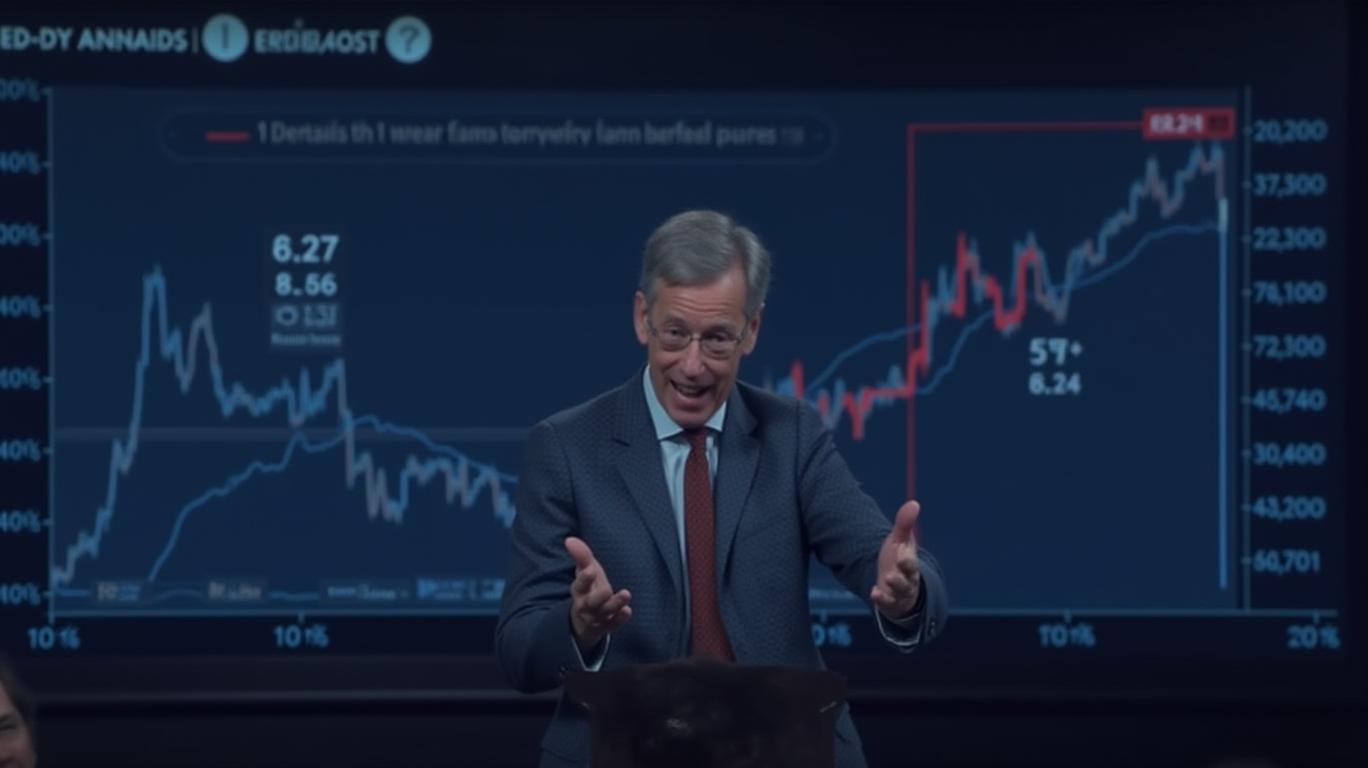Debt Shadows and Rate Risks: Navigating Fiscal Crosscurrents with Defensive Strategies
The U.S. federal debt-to-GDP ratio is projected to hit 124.4% by the end of 2025, a level not seen since World War II. While this figure remains below Greece’s 2010 crisis peak of 141.3%, the trajectory raises urgent questions: How sustainable is this path? What lessons can be drawn from Greece’s collapse? And how should investors position portfolios to weather fiscal and monetary turbulence?
The parallels are stark but not deterministic. Greece’s debt spiraled to 207.4% of GDP by 2021, forcing austerity, bailouts, and years of economic stagnation. The U.S. benefits from its reserve currency status, deeper capital markets, and a stronger growth foundation. Yet, the warning signs—rising yields, policy constraints, and structural fiscal imbalances—are impossible to ignore.
Debt Dynamics: The U.S. Isn’t Greece—Yet
The U.S. debt burden is growing steadily. Since 2020, federal debt has climbed from 102% to 124.4% of GDP, with projections showing it will surpass 128% by 2027. This trajectory mirrors Greece’s pre-crisis path: a slow boil of deficits, exacerbated by economic shocks (e.g., pandemic spending) and a lack of fiscal discipline.
Crucially, the U.S. has avoided Greece’s extreme vulnerabilities—no external bailout dependency, no loss of monetary sovereignty—but its debt service costs are rising. At 4.34%, the 10-year Treasury yield is now above its 4.25% long-term average. With federal interest payments already consuming ~6% of GDP, even modest rate hikes could strain budgets.
Fed Policy: Trapped Between a Rock and a Hard Place
The Federal Reserve’s dilemma is clear. With the federal funds rate pinned at 4.25%-4.5%—its highest since 2007—the Fed is stuck in a policy bind. Raising rates further risks deepening a housing slump or triggering a recession. Cutting rates prematurely, however, could reignite inflation or signal weakness.

The yield curve’s recent flattening (the 30-10 year spread narrowed to 0.38% in April) underscores this tension. Historically, inverted curves have preceded recessions. Investors should treat this as a red flag: The Fed’s room to maneuver is shrinking.
Market Vulnerabilities: When Debt Meets Rates
The interplay of high debt and rising rates creates three key risks:
- Fiscal Squeeze: With interest costs consuming ~$700 billion annually by 2026, discretionary spending (e.g., infrastructure, defense) faces cuts.
- Corporate Stress: High-yield bonds, already pressured by slowing growth, could face downgrades as earnings flatten.
- Equity Volatility: Tech and growth stocks, which rely on cheap capital, are vulnerable to rising discount rates.
Defensive Allocations: Build a Fiscal Firewall
Investors must prioritize sectors and assets that thrive in—or at least survive—fiscal stress. Here’s how to position:
1. Utilities & Infrastructure:
- Why: Regulated utilities (e.g., NextEra Energy (NEE), Dominion Energy (D)) offer stable cash flows and inflation hedges.
- Play: Utilities ETFs (XLU) or infrastructure funds (PFI) provide diversified exposure.
2. Healthcare & Consumer Staples:
- Why: Defensive sectors with pricing power (e.g., Johnson & Johnson (JNJ), Procter & Gamble (PG)) outperform in downturns.
- Play: Health care ETFs (XLV) and consumer staples ETFs (XLP) offer low-volatility income streams.
3. Short-Term Treasuries & Inflation-Protected Bonds:
- Why: Short-term maturities (e.g., 1-3 years) buffer against rate uncertainty. TIPS (TIP) guard against inflation.
- Avoid: Long-dated Treasuries (e.g., 30-year bonds yielding 4.72%) face steep losses if rates rise further.
4. Gold & Defensive Metals:
- Why: Gold (GLD) is a classic hedge against fiscal instability. Silver and palladium (e.g., SIVR, PALL) benefit from industrial demand resilience.
5. Dividend Aristocrats:
- Why: Companies with 25+ years of dividend growth (e.g., Coca-Cola (KO), 3M (MMM)) offer ballast in volatile markets.
Act Now—Before the Next Debt Milestone
The U.S. isn’t Greece, but complacency is dangerous. The debt-to-GDP ratio is on an unsustainable
, and the Fed’s tools are blunted. Investors who ignore fiscal risks will face volatility they can’t control.The time to act is now. Shift allocations toward defensive sectors, shorten bond durations, and layer in hedges like gold. The next crisis may not be as severe as Greece’s—but the warning lights are flashing. Don’t wait until the yield curve inverts or the debt-to-GDP ratio hits 130% to adapt.
Your portfolio’s resilience depends on it.
This article is for informational purposes only and should not be considered financial advice. Always consult a licensed professional before making investment decisions.

Comments
No comments yet